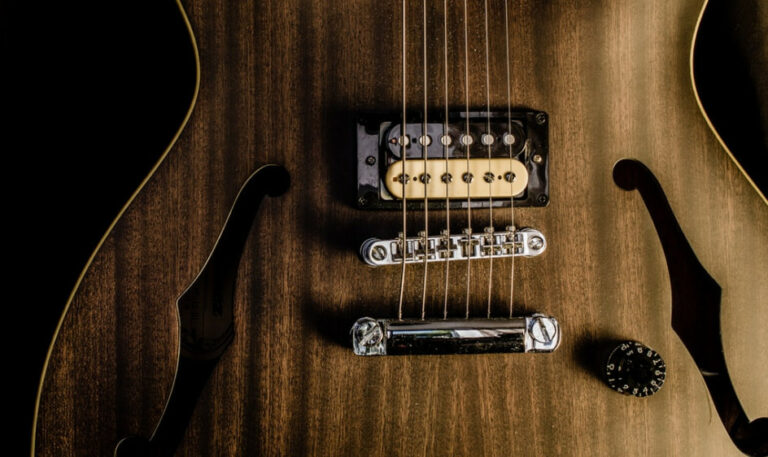Do you ever feel like you not getting anywhere with you practicing?! You put in time almost every day, or you do practice every day but it still seems like you getting nowhere fast…?! 
What you need is a daily guitar practice plan! Let me help you design one.

What are you main practice goals?
Everyone should basically practice 4-6 main concepts every day! These concepts may include chords, strumming patterns, songs, rhythms, music theory, scales, improvising, learning a particular style such as blues, or jazz, songwriting, etc.
Chords
With chords, you want to first start learning them, if you don’t know them already. Start with one finger chords, then two fingers, then three fingers, then four, and finally barre chords. (Insert my own lesson on this).
Next you want to practice switching them using pivot fingers and by keeping the fingers close to the fretboard all the time while practicing.
(Show chord diagrams with examples of chord switching pivot points) (insert videos)
Next you want to start working on strumming patterns.
Strumming Patterns
Some of the simplest strumming patterns can get you pretty far. Eventually, you start finding the same or similar strumming patterns in each song you are learning. Then you learning will start to progress faster. At some point, you may hit a plateau. Don’t worry, keep going! It happens to everyone! Keep learning strumming patterns and new songs, but also keep reviewing the old ones. They will get better and so will you!
(Insert strumming pattern rhythms and videos)
Songs
As you progress, you’ll start to find that most songs contain the same or similar chords, as well as the same or similar strumming patterns. There are, of course, many variations upon variations, especially strumming patterns. However, the more songs you learn and the more strumming patterns you learn, it starts to become easier to learn new ones. You start seeing the same or similar patterns show up, and you start to realize this isn’t as hard as you thought it was.
(insert lists of songs to be learned with links to videos)
Rhythms
Aren’t rhythms the same as strumming patterns? Yes, well sorta… When you first learning to play, that’s all you know rhythms to be is strumming patterns. But soon you learn that rhythms can apply to riffs, licks, lyrics, drums, bass lines, etc.
Let’s talk more about rhythms to clarify some things.
Music Theory
To some, music theory is a bad word, it’s offensive, scary, intimidating, etc. But it doesn’t have to be. Let’s examine this more in depth! Music theory, is just that, theory. Really, it’s someone’s ideas or theories about how music works. Yes, there have been many music theorists throughout history. That also doesn’t mean that someone’s theory was right, and someone’s was wrong.
It just means that someone with some musical ability (that can be learned, not necessarily just born with), and created some music. It might have been instrumental, or with some singing with or without instruments, etc. Then someone came along and analyzed it and came up with the reasons why it worked and theorized about how the person conceived of the musical idea. Very often, the composer of the music just liked the way it sounded. They didn’t necessarily care about the theory behind it, at least in the beginning.
This is obviously an oversimplification of how music theory became a thing, but my point is, music theory probably came after the creation of the music, therefore, don’t be scare of it. Learn it, and learn about it, don’t be scared by it, it’s nothing to fear. It’s actually something to embrace and use. It’s a tool in the artists’ palette of available resources. Nothing more, nothing less.
The first part of music theory I would recommend would be to learn the names of the strings of the guitar, then the notes on the frets, and finally the notes of you chords, within the chords.
For more info: (insert link to other blog post)
Next start learning some scales…
Scales
Scales are basically the ABC’s of music. It’s helpful to know them, learning them trains you ears and you fingers to find the “right notes.” However, if you don’t learn to play scales creatively, then you start to get bored, and you realize you just don’t know what to do with them.
Let me gives some ideas about how to learn you scales on the guitar.
1) Learn the CAGED method. I know, there are many who will tell you don’t waste you time, but I have to tell you that one of my favorite guitar players used the CAGED method in this own teaching style.
2) Learn you scales in this order: Pentatonic, Major, Modes, Minor, Minor Modes, Exotic Scales (Insert Link)
3) Learn to make the scales more musical by:
- melodic sequences,
- build you chords on the scale (harmonized scales
- find the triads within the scales
- learn to enjoy each note in the scale and play it against a chord to find the tension and resolution
- learn other players solos (not just guitar players)
- transcribe solos (see above)
- learn tunes and try to identify the scales within the tune/ song
- sing you scales
- try to make up you own licks, melodic ideas, melodies, don’t be afraid to sing while you play (George Benson)
- play along to backing tracks (search for on YouTube)
4) Forget everything you “know” and just play guitar… make music, be a kid again like it’s his/ her first time holding a guitar, enjoy the sound of every note you play, one note at a time…
5) Find other musicians to jam with/ form a band… get gigs, play out in various venues inside and outside of buildings – birthday parties, weddings, bar mitzfahs, funerals, pool parties, etc.
Ear Training
1) Sing everything, guitar solos, trumpet solos, you favorite songs by you favorite singers, take voice lessons
2) Use ear training apps – do a google search and/ or go to the app store of you favorite device and look up ear training apps – do this everyday.
3) Try to figure out songs by ear, what key is it in, what chords is it using, what scales is it using, is it major or minor, or some exotic scale or chord… figure a little bit of the song every day until you get it (this is what the pros do/ did, from Eric Clapton, to Jimi Hendrix, Wes Montgomery, etc.
Organization
So if you only have a few minutes a day or a few hours, schedule out you practice time with the time you do have available to you. If it’s only 30 mins, do 5-10 min. each of the things listed above. You may not get to everything every day, but that’s OK, do what you can with whatever time you have available to you. If you have 45 min. to an hour then do 10-15 min per category of things you need to work on.
Start with something a warm up and then something that is very challenging for you, so that if you run out of time, at least you practiced that “one thing” that was very difficult. Then move on to something like scales, chords, theory, learning a new song.
Always end with something fun and easy, like you favorite song, or practicing improvising (taking solos) with you favorite backing track or song. That way you always end on a good note, and because you had more fun with it, you’ll be more likely to pick it up the next time to play, I mean practice…
Open up google sheet or an Excel spreadsheet and make a chart that looks something like:
Suggested Guitar Practice Plan
Conclusion
To achieve anything worthwhile, you have to create a plan. Learning how to play guitar is no different. Start with a few areas you’d like to work on, and then starting plugging you ideas into a practice plan. Then be vigilant about using it every time you practice, and you will start to see improvements much faster than you may have in the past…

Wow This is a great guide about playing the guitar. I really like playing the guitar. But I can’t play much. I also practice sometimes alone. Now I can practice with this guide. I had not done this ear training before. I will continue to do so. I hope it helps a lot. Keep posting guides like this. Many thanks for this valuable and comprehensive post.
Thanks, I’m probably going to update this with further information about ear training. I appreciate your thoughts!
It is faster to learn playing guitar when one has a strong motivation. I am assisting church members in their guitar learning practice and I noticed that those who have firm purpose (that motivates them) learn faster than those who just practice because their friends do.
I agree about organizing a daily guitar practice plan and really appreciate that you attached your suggested printable practice plan templates.
I would also suggest to include learning the family of chords early on.
Thank you for this helpful blog.
God bless you
I have experience playing in churches also. Thanks for your thoughts! God bless you also!